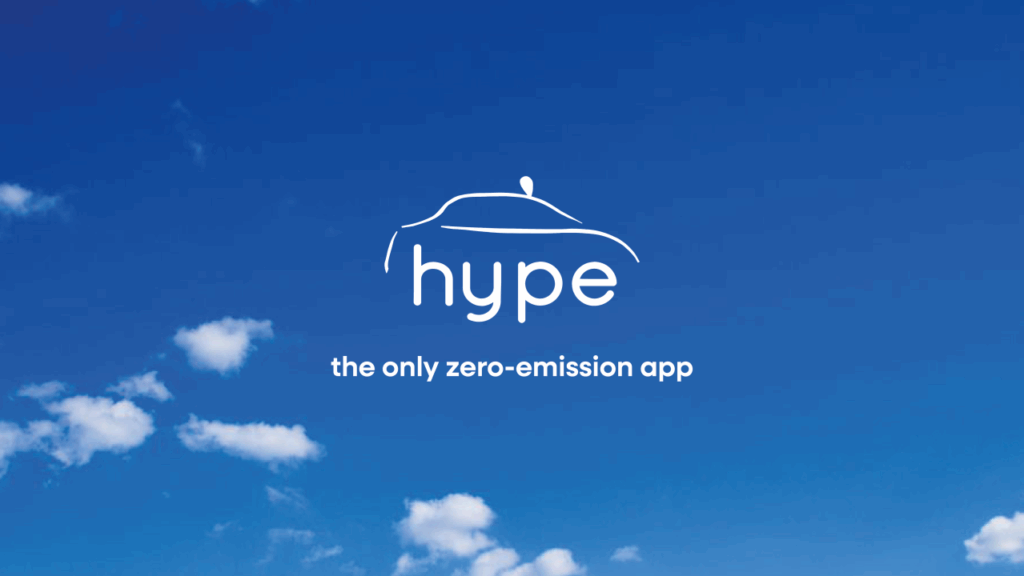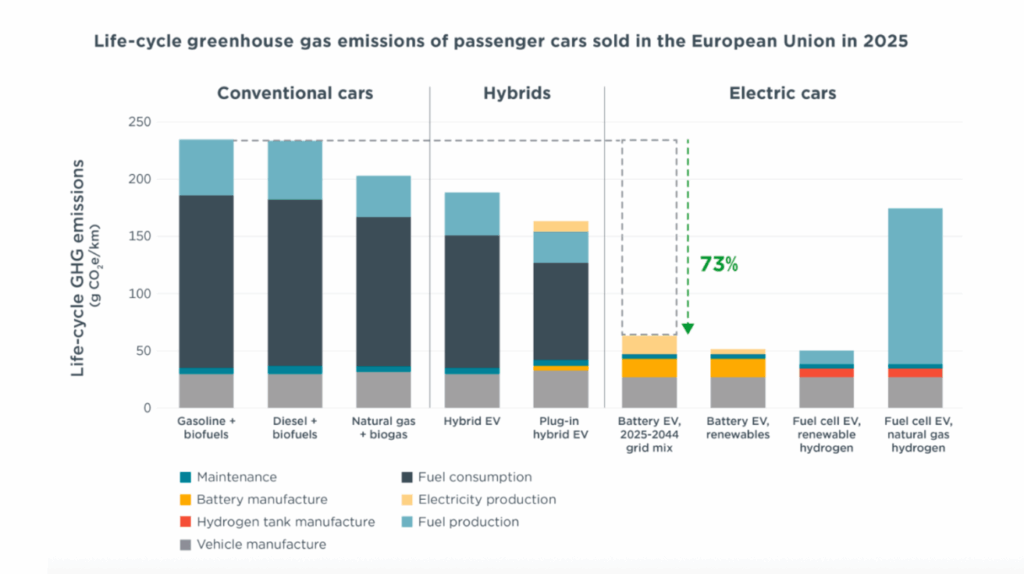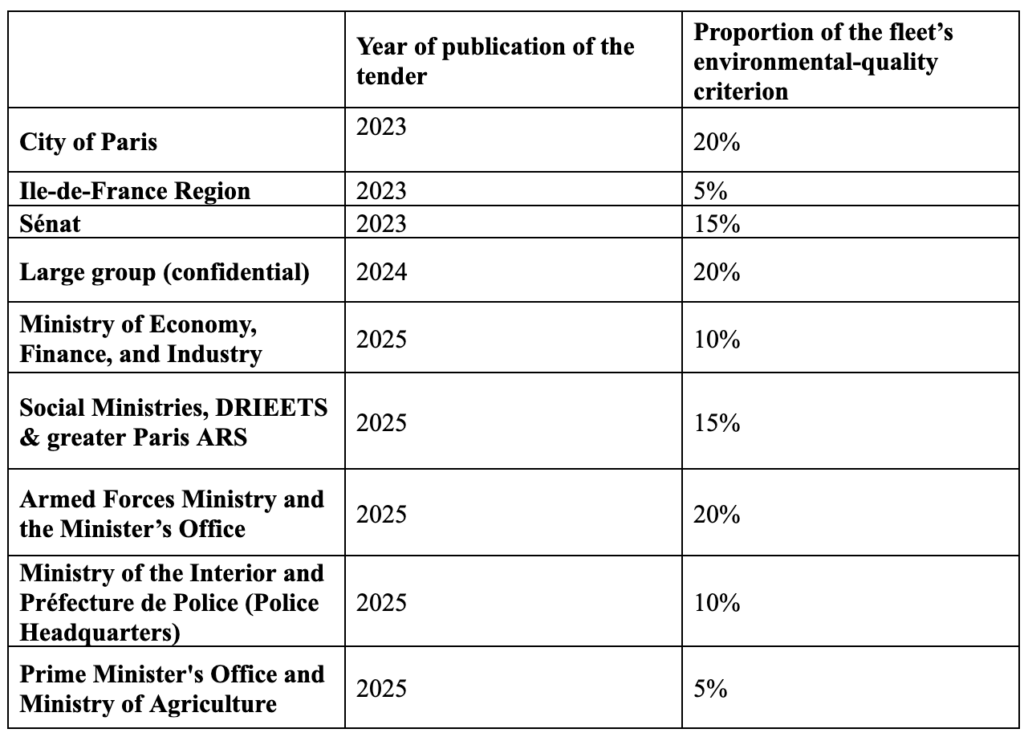
Why Hype is different from G7, Uber… and why we’ve just won a new major contract
Published on July 31, 2025
“Is a hybrid vehicle as ‘green’ as a fully electric vehicle?”
NO, that is not the case at all. The latest study (link and link) by the ICCT (the International Council on Clean Transportation, an independent organization that meets the highest standards of reliability, and known notably for uncovering the Dieselgate revelations) makes this undeniably clear.
In the European Union, when the full life cycle is considered, hybrid vehicles, including plug‑in hybrids and hydrogen vehicles powered by non‑green hydrogen offer only very limited effectiveness in reducing carbon emissions.

That is why, since its inception in 2015, Hype has operated exclusively with 100 % electric vehicles, and why, on June 18, 2025, Hype announced its decision to withdraw its hydrogen taxis from the Paris region (link), as the market’s current setup no longer guarantees the use of green hydrogen in the short term.
These data are public, and now as indisputable as global warming itself. Keep on communicating without taking it into account would expose one to a misleading practice known as greenwashing.
« G7 and Uber also operate hundreds of fully electric vehicles, so why choose Hype? »
Because in this field, as in any other, prioritizing a pure‑play offering equivalent service, maximizes the impact of your choice.
100 % of the taxi fleet affiliated to Hype is fully electric, and since its inception all of Hype’s resources have been devoted exclusively to the transition to 100 % electric.
Hype has no other objective, no carbon-based market share to defend or maintain, and no other activities that would dilute its unique mission: to decarbonize and depollute taxi and ride-hailing fleets now and at scale.
Every euro of revenue Hype earns is immediately used 100 % toward achieving this goal.
Choosing Hype also sends a clear and necessary message to drivers to renew their next vehicle with a 100 % electric one: “Your customers now favor 100 % electric taxis”.
Share of 100% electric vehicles in the booking platforms fleets (taxis & ride‑hailing)


« Can Hype serve new clients with the same level of efficiency? »
Hype’s affiliated fleet size is indeed limited by the number of fully electric taxis currently in operation. Much of our efforts are focused on supporting drivers to accelerate their transition to 100 % electric vehicles.
However, we only accept new contracts that we are fully capable of servicing. Our organization, which includes salaried drivers in addition to independent ones, gives us a unique flexibility unmatched by platforms relying solely on independent-drivers.
This is why major clients have trusted us for the past two years, especially those who selected us through competitive tenders to be their exclusive taxi provider and manage large trip volumes.
The first major client to lead the way was the City of Paris in December 2023, and the most recent exclusive tender we were very pleased to win last week came from the Social Ministries (Labour, Health and Social Affairs, Families, and People with Disabilities of France), the Regional Directorate for the Economy, Employment, Labour and Solidarity (DRIEETS), and the Île‑de‑France Regional Health Agency (ARS).
« Is Hype more expensive? »
NO, it’s been our commitment from day one: the shift to 100 % electric rapid and at scale must be facilitated, and therefore at no additional cost to either the customer or the driver.
However, Hype does not offer any “promo codes”, and we strictly follow and enforce regulations to ensure drivers can comply while earning a sustainable income in the long term.
« As a customer, how can I practically support this transition? »
Send the message, especially to drivers, that you are now prioritizing 100 % electric taxis whenever possible, whether with Hype or its competitors.
For those issuing tender processes, simply increase the weighting given to the environmental criterion of the vehicle fleet. While this criterion is included in every tender, it is often set too low. Given the urgency of the climate crisis, is it really wise to prioritize reducing waiting times by one minute if this means favouring vehicles that emit significantly more carbon and local pollutants?
Proportion of the fleet’s environmental‐quality criterion among all evaluation factors (including price, technical capacity, accessibility of persons with disabilities, etc.):

These figures are public; it’s important that they are known, and we will continue to publish them.
What will be your company’s or employer organization’s figure for its next tender?
References
¹ 𝖠𝗋𝗍𝗂𝖼𝗅𝖾 « 𝖦𝟩 : 𝗅𝖾 𝗏𝖾𝗋𝖽𝗂𝗌𝗌𝖾𝗆𝖾𝗇𝗍 𝖽𝖾 𝗅𝖺 𝖿𝗅𝗈𝗍𝗍𝖾 𝗉𝖺𝗌𝗌𝖾 𝖺̀ 𝗅𝖺 𝗏𝗂𝗍𝖾𝗌𝗌𝖾 𝗌𝗎𝗉𝖾́𝗋𝗂𝖾𝗎𝗋𝖾 » – 𝗈𝖼𝗍𝗈𝖻𝗋𝖾 𝟤𝟢𝟤𝟣 (𝗅𝗂𝖾𝗇)
² 𝖠𝗋𝗍𝗂𝖼𝗅𝖾 « 𝖦𝟩 𝖺𝗍𝗍𝖾𝗂𝗇𝗍 𝟫𝟢 % 𝖽𝖾 𝖻𝖾𝗋𝗅𝗂𝗇𝖾𝗌 𝗁𝗒𝖻𝗋𝗂𝖽𝖾𝗌 𝖾𝗍 𝖾́𝗅𝖾𝖼𝗍𝗋𝗂𝗊𝗎𝖾𝗌 𝖾𝗍 𝖼𝗈𝗇𝖿𝗂𝗋𝗆𝖾 𝗌𝖾𝗌 𝖺𝗆𝖻𝗂𝗍𝗂𝗈𝗇𝗌 𝖾𝗇 𝗆𝖺𝗍𝗂𝖾̀𝗋𝖾 𝖽𝖾 𝗍𝗋𝖺𝗇𝗌𝗂𝗍𝗂𝗈𝗇 𝖾́𝖼𝗈𝗅𝗈𝗀𝗂𝗊𝗎𝖾 » – 𝗃𝖺𝗇𝗏𝗂𝖾𝗋 𝟤𝟢𝟤𝟧 (𝗅𝗂𝖾𝗇)